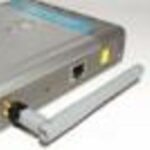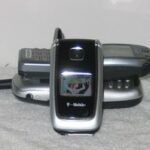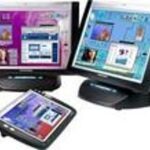Installing a wireless card in a laptop or desktop may seem like a big deal. We’re going to take the fear away and get you on the road to happy, mobile computing. So let’s get started!
First, you’ll need to decide if you’re going to go wireless with a desktop pc or a laptop pc. The reasons for going wireless with a desktop pc are varied. The most common reason is that someone buys a new computer for a different room in the house or small office. They don’t want to have to run cabling across the floor or fish it through the walls and ceiling. Wireless networking offers a solution that is quicker to implement, less expensive and overall and easier effort to get networked.
The alternative is to choose to go wireless with a laptop Of course, the benefits here are relatively obvious. Being able to have the freedom to be anywhere within that wireless coverage and being able to connect to your network or the Internet is convenient. You may be on your deck sipping coffee, laying in bed trying to finish homework, or playing your favorite online game from your comfy recliner.
Desktop pc’s often take a card called a PCI card. These look like little computer boards with chips and diodes on it, along with having an antenna connected to it for wireless reception. To install this type of card, follow these instructions. First, ensure your pc is shut down and the power plug is unplugged. Next, open the case to your computer to expose its inside. Now, find the expansion slots on your pc’s motherboard. These are normally located near the back of the pc and look like little raise slots to plug something into. Now, remove the small metal backing plate so that the card can be exposed to the outside of the case. Gently snap the card into place, connect your antenna through the hole in the back of the pc you created by removing the backing plate. Ensure the card is seated firmly put the cover back on the pc, plug it in and boot it up!
Now, when your pc boots up, if it’s Windows 2000 or newer operating system, it should automatically detect that something new was added. Depending on the model card that you bought, the pc may be able to find all the needed drivers to complete the install. If not, have the manufacturer’s cd handy to install the needed drivers. Viola, you are done with the installation! You may need to reboot your pc for the newly installed drivers to take effect. Your next steps would be to configure the card to match the settings of the wireless network you’re attempting to connect to. If you don’t know how to do that, you’ll need to check with the system’s administrator.
Of course, for a desktop pc, you can also buy a USB external antenna that simply needs to be plugged into a USB port, install the drivers and you’re ready to go. No need to open the case, unplug the pc and install a card. The other benefit to a USB antenna is that you can quickly attach it to any other device that has an open USB port.
For a laptop, you’ll need to purchase a PMCIA based wireless card, or if your laptop has USB ports available, you can use the USB antenna as mentioned above. To install the PMCIA card, simply have your laptop turned on, and gently slide the card into the slot until it seats firmly. Your Windows 2000 or newer operating system should find that something new was added to the machine. If the drivers are not already loaded into your operating system, you’ll need the cd to install drivers just like on the desktop.
Once the drivers are installed, you may need to reboot your pc, configure the settings specific to your wireless network and you should be online and ready to go!







